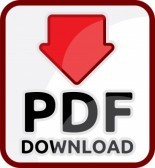A. L. Ivanov1, S. N. Volkov2, I. Yu. Savin1
1V.V. Dokuchaev Soil Science Institute, Russia, 119017 Moscow, Pyzhevskii per. 7,
2State University of Land Use Planning, Russia 105064 Moscow, Kazakova str., 15
The issues of improving land relations, rational land use and adaptation to climate are considered as the basic directions of the development strategy of the agro-industrial complex, discussed and supported by the Presidium of the RAS (18.04.2017). It is emphasized that the main determinant of a successful solution of all problems in modern land use management in Russia are measures to protect the soil cover, an adequate assessment of its condition and a fundamental change in land relations that the Federal Land Service should resolve. The consequences of the inconsistent implementation of land reform in the post-Soviet period, the main negative outcome of which are the latifundism of large agroholdings and companies, are shown. The resource potential of the modern land fund of the country is estimated to be one third less than the pre-perestroika one. The main direction in the development of agroproduction is modernization, intensification, development of land reclamation and chemicalization, which will allow us to reach, at a minimum, the average world yield level (3.5 tons / ha). The risks associated with the proposed land expansion (plowing) of land withdrawn from circulation, including marginal and badlands, are discussed. Examples of micromorphological indication of soil degradation and uncertainty associated with the detection of the results of modern space images analysis are shown. The necessity of actualization of information on soil degradation and assessment of suitability (favorability) for active agricultural production is substantiated.
Keywords: land use, abounded soil and land degradation, agricultural management
Citation: Ivanov A. L., Volkov S. N., Savin I. Yu. The soil-ecologic and infrastructure aspects of agroproduction development strategy realization in Russia, Byulleten Pochvennogo instituta im. V.V. Dokuchaeva, 2017, Vol. 89, pp. 104-120. doi: 10.19047/0136-1694-2017-89-104-120
REFERENCES
1. Volkov S.N. Land relations in the agrarian and industrial complex of Russia and the scientific substantiation of the main directions of their regulation. Moscow: Ministry of Agriculture of Russia, 2017. 44 p. (in Russian)
2. Unified State Register of Soil Resources of Russia. Version 1.0 / Ed. Ivanova A.L., Shoby S.A. Moscow, Soil. Institute of. V.V. Dokuchaeva Publ., 2014. 768 p. (in Russian)
3. Ivanov A.L. The soil cover of Russia in conditions of global challenges, Bulletin of the Russian Academy of Sciences, 2015, No. 11, pp. 984-992. (in Russian)
4. Ivanov A.L., Kiryushin V.I., Molchanov E.N., Savin I.Yu., Stolbova VS Analysis of land reform and agro-industrial production for a quarter of a century. Soil-ecological, technological, institutional and infrastructure aspects of modernization. Land service. Moscow: Soil. Institute of. V.V. Dokuchaeva Publ., 2016, 95 p. (in Russian)
5. Ivanov A.L., Savin I.Yu., Stolbova V.S. Resource potential of the Russian lands for the development of crop production, Reports of the Academy of Sciences, 2017, T. 473, No. 2, pp. 218-221. (in Russian)
6. Lupyan E.A., Bartalev S.A., Savin I.Yu. Technologies of satellite monitoring in agriculture of Russia, Aerospace courier, 2009, No. 6, pp. 47-49. (in Russian)
7. Activities of a comprehensive plan for the management of greenhouse gas emissions, technologies for adaptation to climate change and the achievement of zero-degradation of land (soils) in agriculture in Russia, Moscow, Soil. Institute of. V.V. Dokuchaeva Publ., 2017. 39 p. (in Russian)
8. Savin I.Yu. Modern satellite monitoring of soils and crops: achievements and problems, Application of remote sensing of land in agriculture, Moscow, 2015, pp. 29-32. (in Russian)
9. Stolbovoi V.S., Savin I.Yu., Sheremet B.V., Sizov V.V., Ovechkin S.V. The Geoinformation System on Soil Degradation in Russia, Eurasian Soil Science. 1999. Т. 32. № 5. С. 589-593.
10. Ushachev I.G. Strategic directions of sustainable socio-economic development of the AIC of Russia (Report at the Presidium of the RAS). Moscow: VNIIESH Publ., 2017, 31 p. (in Russian)
11. Minasny B., Malone B.P., McBratney A.B., Angers D.A., Arrouays D., Chambers A., Chaplot V., Chen Z.S., Chengg K., Das B.S., Field D.J., Gimona A., Hedley C.B., Young Hong S., Mandal B., Marchant B.P., Martin M., McConkey B.G., Mulder V.L., O'Rourke S., Richer-de-Forges A.C., Odeh I., Padarian J., Paustian K., Pan G., Poggio L., Savin I., Stolbovoy V., Stockmann U., Sulaeman Y., Tsui C.C., Vågen T.G., van Wesemael B., Winowiecki L. Soil carbon 4 per mille, Geoderma, 2017, V. 292, pp. 59–86. doi: 10.1016/j.geoderma.2017.01.002
